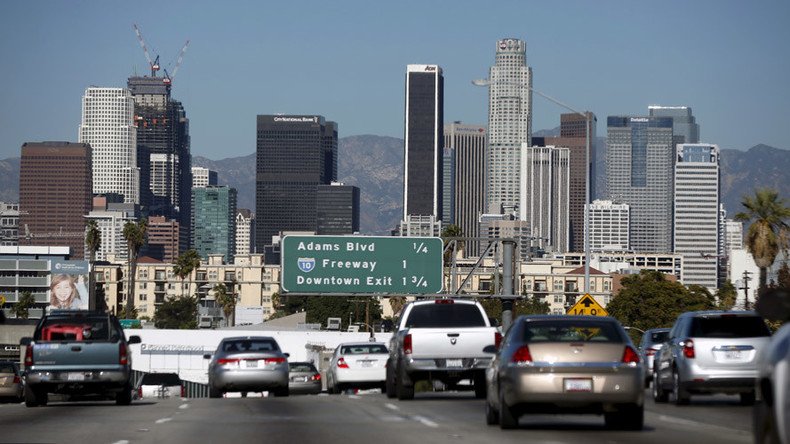The Big One: 'Large scale motion' detected along San Andreas fault

Large scale motion has been detected along the San Andreas Fault line, thanks to new analysis of existing data that could help predict ‘The Big One’ in the future.
Previously uninterpreted data showing vertical movement of the fault’s crust detected several millimeters of uplift and subsidence in surface areas as large as 125 miles.
While these hotspots were predicted in models before, this is the first time scientists were able to block out white noise and other diluting factors such as precipitation and local surface geology.
Detection of vertical movement in 'lobes' at #SanAndreasFault (source Howell) pic.twitter.com/7AbLbhaN35
— Colm McGlinchey (@ColmMcGlinchey) June 21, 2016
Published in the Nature Geosciences journal, researcher Samuel Howell said they were able to use the new modeling technique to “break down the noisy signals to isolate a simple vertical motion pattern that curiously straddled the San Andreas fault.”
If California ever slides into the ocean...it will start right here. I believe that's the San Andreas Fault pic.twitter.com/IdSv3Zbib3
— Brian Wesbury (@wesbury) June 18, 2016
Vancouver can get an #earthquake too, but Cali has the San Andreas Fault. Look at that red line! #crashCoursepic.twitter.com/IdyEFHZ35v
— Hifsa A (@hifsa_) June 10, 2016
The San Andreas Fault is the tectonic boundary between the Pacific and North American Plates and runs close to major cities such as Los Angeles and San Francisco as well as nuclear power plants
READ MORE: Disasters waiting to happen: 8 most dangerous nuclear plants near earthquake fault lines
‘The Big One’ is expected to produce a game-changing earthquake within the next 30 years causing massive devastation to California.
Federal, state, and military officials have been working on contingency plans for the looming disaster, which could see 14,000 dead and 30,000 injured, according to AP.
Catastrophic California quake due at any time, warns seismologist https://t.co/RZbLjfIUZlpic.twitter.com/IQW99lS7wy
— RT (@RT_com) May 6, 2016
California’s ‘Big One’ could trigger super cycle of destructive quakes – leading seismologist http://t.co/HS1zABiKuWpic.twitter.com/Hg4YHEko1N
— RT (@RT_com) April 23, 2015
A 2005 study published in the journal Nature found the fault had reached a sufficient level of stress for an earthquake of a magnitude greater than 7.0, with the risk concentrated on the area of the fault near Los Angeles.
According to the new research, scientists will be able to study and understand the behavior of faults, even when dormant, using the vertical readings in the hope of predicting activity.
Emergency services will also benefit from more accurate seismic hazard estimates, predicting where on the surface movement is more likely to occur when ‘The Big One’ eventually strikes.
San Francisco’s 1906 earthquake of magnitude 7.8 left more than half of the city’s residents homeless and killed between 700 and 3,000 people.
The view down Sacramento Street in San Francisco, California #after the #great#earthquake of 1906 pic.twitter.com/5LhJLeMahR
— Globe_Pics (@GI0be_Pics1) June 20, 2016
Chilling photos of San Francisco after the 1906 earthquake set it ablaze… https://t.co/pf8whgGmrqpic.twitter.com/TqUBmkZXqb
— Tech Pause (@tech_pause) May 2, 2016












